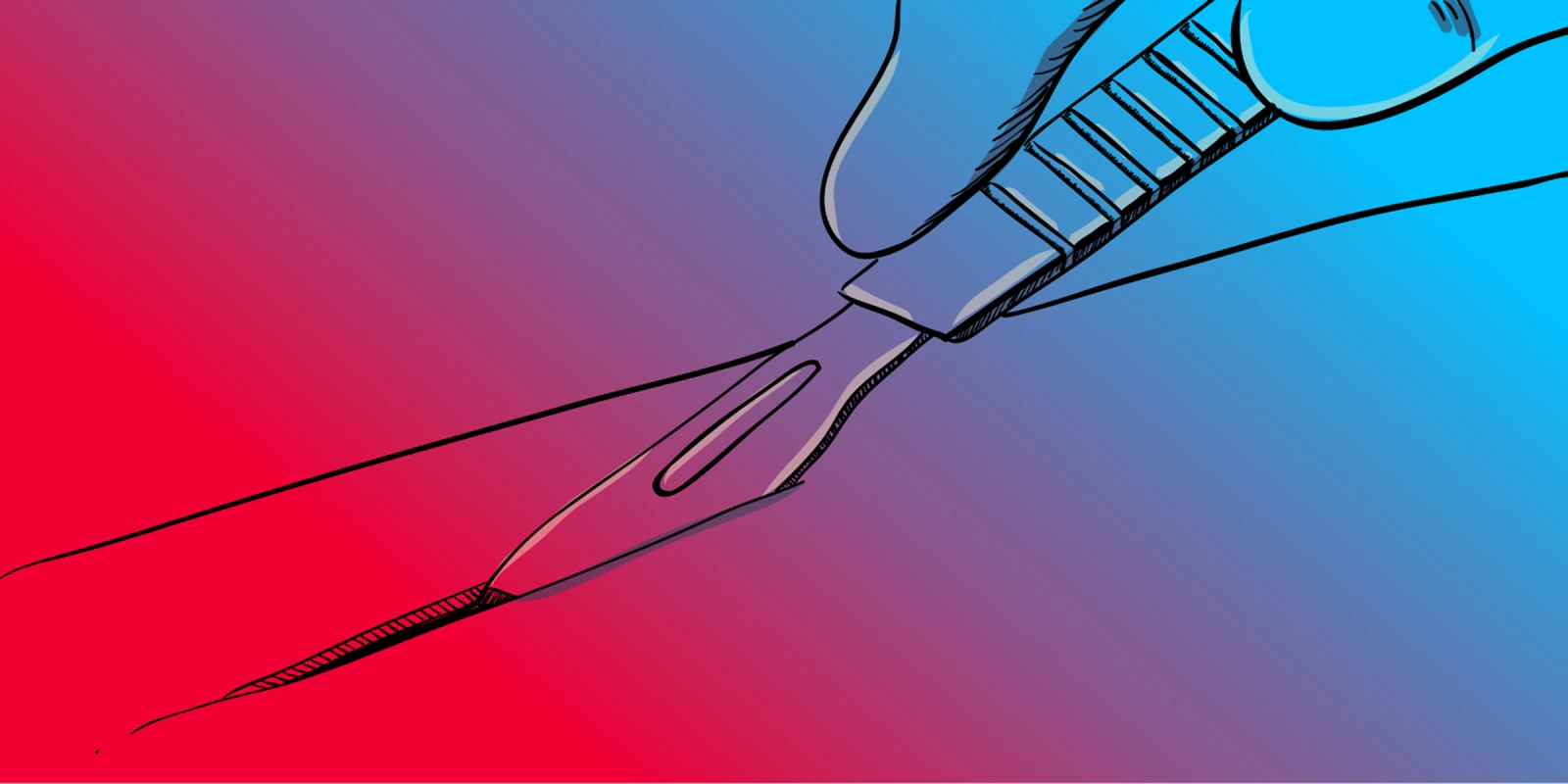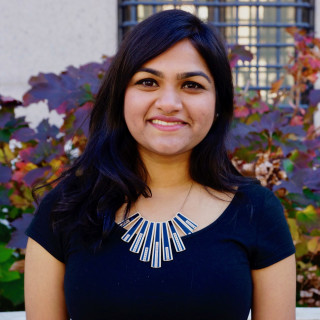The anticipation I felt as I was about to make my first cut into a cadaver surprised me. When the time came to unzip the plastic covering and remove the muslin cloth laid over the body, I was brimming with curiosity. I was excited to uncover structures I had only seen in textbooks or palpated through the skin.
After an hour of cutting, this initial excitement waned but did not diminish completely. As my lab partner and I fidgeted to get better cutting angles, we failed to notice the muslin cloth slipping off the table. When we finally straightened up, stretching our backs, I noticed that the cloth had slipped away from our donor’s hands, which were clasped neatly over each other, atop the abdomen.
My gaze latched onto the donor’s whitish-blue nail beds, with grooves as defined as a seashell’s. As if for the first time, I noticed the crosshatching of the palms and the notches of each knuckle. Did hands really look like that? I stared at my own purple-gloved hands, gripping a scalpel and probe. At that moment, I forgot what real hands looked like.
Dotting my fascination were spots of confusion: Why hadn’t I experienced this reaction in the previous hour? What changed? Why the hands? I wondered if my distinct reaction arose from my upbringing.
In the Hindu tradition I grew up with, hand gestures are believed to articulate meaning through “mudra,” an ancient gestural vocabulary. Mudra is used to denote the “expression of things by their right names” and are thus the foremost means of nonverbal communication in various art forms. As a young dancer of Bharatanatyam, a classical Indian dance form, I used mudras to emote and express.
The donor’s hands brought me back to my childhood, when I learned how to tell entire stories through combinations of various gestures. Through mudras, I shared stories of religious and cultural significance as a means of connecting with my history and my people. For me, the hands were not simply structures in the body, but silos of concentrated symbolism, housing both humanity and history.
Seeing the donor’s hands shed light on an uncharted significance. I became tethered to the body before me. Perhaps the necessity of “expression of things by their right names” extended to our donor. Staring at every inch of their shape, it felt unkind to view them as a hollow vessel, a vestige of the life they once occupied. I was ashamed of my initial excitement, of my haste to invade their space without acknowledging their presence. Each mole, each scar, each groove of flesh became hyperrealistic, pushing me to ponder the history of each feature.
Dissection is an intimate act, one which requires a baring of not only the donor’s body, but also the dissector’s vulnerability. We are exposed to the uncomfortable reality of death and the transience of life. More importantly, we are confronted with our own history. As we view our donor’s body and learn to recognize the life that once animated each feature, we are reminded of ourselves, our bodies, and our lives, which might not be so different from our donor’s. In such moments, it becomes evident that, despite their death, the donors’ humanity lives on. Their humanity exists in their donation, their physical presence, and within every fragment which we touch. Perhaps the hands of these donors were the very same that held onto their children or grasped the palm of their physician for the last time. Perhaps these hands had gripped the rails of a hospital bed in fear or held a face in sorrow in a state of uncertainty, surrounded by clinical white walls.
Author Richard Barnett once wrote that turning a person into a thing — a cadaver on a dissecting table, a specimen in a jar, an illustration in a textbook — demands labor. After touching the donor’s hands, however, I realized that to reverse that labor and reanimate the body through our emotions would require unfathomable work. As medical students, we bring our histories, our cultures, our lived and ancestral traumas, and our resilience with us into the anatomy lab. Knowing little of the history of our donor, we imbue the cadavers with the meaning of life as we have learned it. With each cut and each effort to manipulate structures, we are poised to piece together not only a map of the human body, but also our own expectations.
I expect there might be a time when I quite literally hold a patient’s life in my hands. I hope that, when that time comes, I will remember my first donor’s hands, how they emoted and expressed life simply through their presence, and how they held significance beyond what was immediately visible.
Stepping out of that cold, fluorescent place, I gained a soft awareness, a glowing orb of understanding, refracted by the emotions and gestures of my peers. Untying our gowns, taking off our goggles, we stared expectantly at each other, as would a group of strangers who witnessed a strange occurrence on a morning commute. Huh, we all seemed to say with our eyes. That wasn’t what I expected.
Do you recall the first time you worked with a deceased donor? Share your experience in the comment section below.
Meghana Noonavath is a first-year medical student at the University of Washington School of Medicine.
Illustration by Yi-Min Chun







